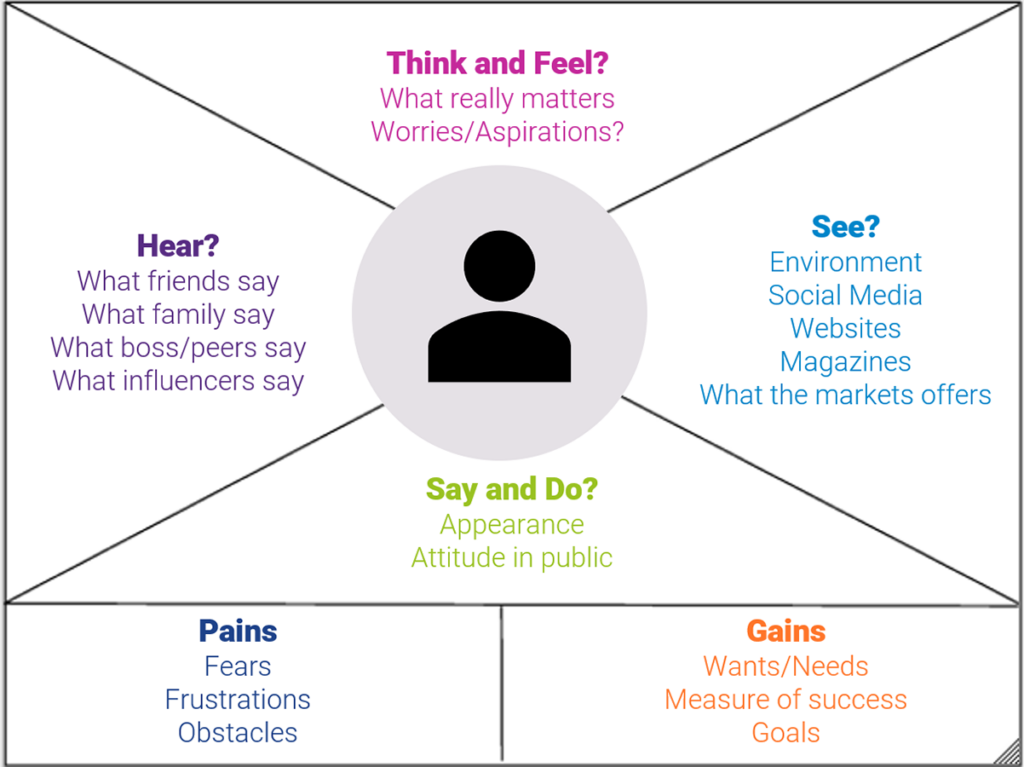Hi, I’m James. Thanks for checking out Building Momentum: a newsletter to help startup founders and marketers accelerate SaaS growth through product marketing.
It’s no secret that the most effective teams are the most aligned too.
Although I’d hazard a guess that – for most organizations – alignment is focused on internal business goals. Priorities, imperatives, strategic pillars, mission and vision. Ways of working, values, responsibilities.
But how many teams are fully aligned on the foundation of their business: the customer?
In this post:
Take the empathy map challenge
I bet if you asked five people across your business to explain your archetypal customer, you’d end up with five completely different versions. So that’s what you should do.
Ask a few people to take one hour of their day, and complete an empathy map individually – and importantly, mark each note if it’s an assumption, or if it can be evidenced.
Get them back, and see how they differ. You’ll not only uncover what your team know about customers and can provide evidence to back up, but you’ll see the type of assumptions that people are making across your business. These might be strong and correct – but could be limiting and even damaging to your business.
With that insight, you’ll be empowered to make changes – and have evidence that there’s a need to focus on building knowledge.
What is an empathy map?
An empathy map is a concept borrowed from the UX world, with the aim of articulating what is known about a particular type of user, and creating a shared understanding.
There are different versions available, but this is the one I use:

The empathy map is made up of six sections: four in a grid, and two summaries underneath.
Say & Do: What does your customer say about their business, challenges, and your product? What steps do they take?
Hear: What do they hear from friends, colleagues, the media, passers-by? What is influencing them?
See: When they look at the marketplace, what do they see? What do they see from your competitors? What are they reading or watching?
Think & Feel: What emotions is your customer feeling? What’s their interpretation of their challenges, their options, and how they want to do business?
In the two sections underneath, apply some critical analysis and summarise the insights above through two opposite lenses:
Pains: What are the challenges and frustrations your customer is facing? What does failure look like? What does your customer want to avoid?
Gains: What does success look like? What does your customer stand to gain from solving their challenges?
Assess these at three levels to be super strong: business outcomes, professional outcomes, and personal outcomes.
Shared understanding is a foundational competitive advantage
In air navigation, the rule of 1 in 60 applies. For every one degree traveled off course for 60 miles, the plane will land 1 mile off the intended destination.
As an analogy, every person in your business is one plane. Teams are squadrons. A startup is an entire air force.
Without aligning teams on their core understanding of your customers – and course correcting where necessary – you’ll never end up in the same place.
But what would you achieve if you could get all teams focused on the same intended destination?




